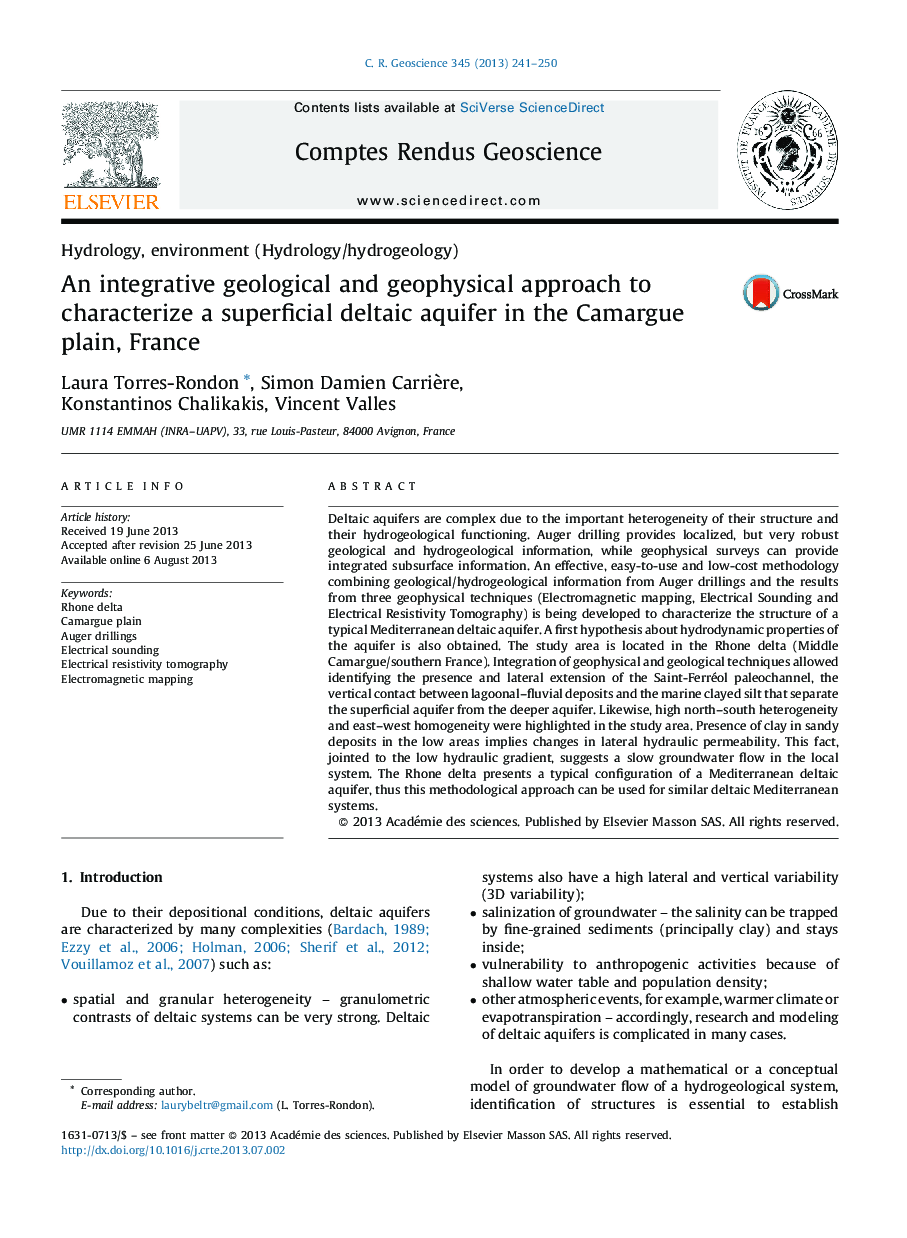| Article ID | Journal | Published Year | Pages | File Type |
|---|---|---|---|---|
| 4462099 | Comptes Rendus Geoscience | 2013 | 10 Pages |
Deltaic aquifers are complex due to the important heterogeneity of their structure and their hydrogeological functioning. Auger drilling provides localized, but very robust geological and hydrogeological information, while geophysical surveys can provide integrated subsurface information. An effective, easy-to-use and low-cost methodology combining geological/hydrogeological information from Auger drillings and the results from three geophysical techniques (Electromagnetic mapping, Electrical Sounding and Electrical Resistivity Tomography) is being developed to characterize the structure of a typical Mediterranean deltaic aquifer. A first hypothesis about hydrodynamic properties of the aquifer is also obtained. The study area is located in the Rhone delta (Middle Camargue/southern France). Integration of geophysical and geological techniques allowed identifying the presence and lateral extension of the Saint-Ferréol paleochannel, the vertical contact between lagoonal–fluvial deposits and the marine clayed silt that separate the superficial aquifer from the deeper aquifer. Likewise, high north–south heterogeneity and east–west homogeneity were highlighted in the study area. Presence of clay in sandy deposits in the low areas implies changes in lateral hydraulic permeability. This fact, jointed to the low hydraulic gradient, suggests a slow groundwater flow in the local system. The Rhone delta presents a typical configuration of a Mediterranean deltaic aquifer, thus this methodological approach can be used for similar deltaic Mediterranean systems.
